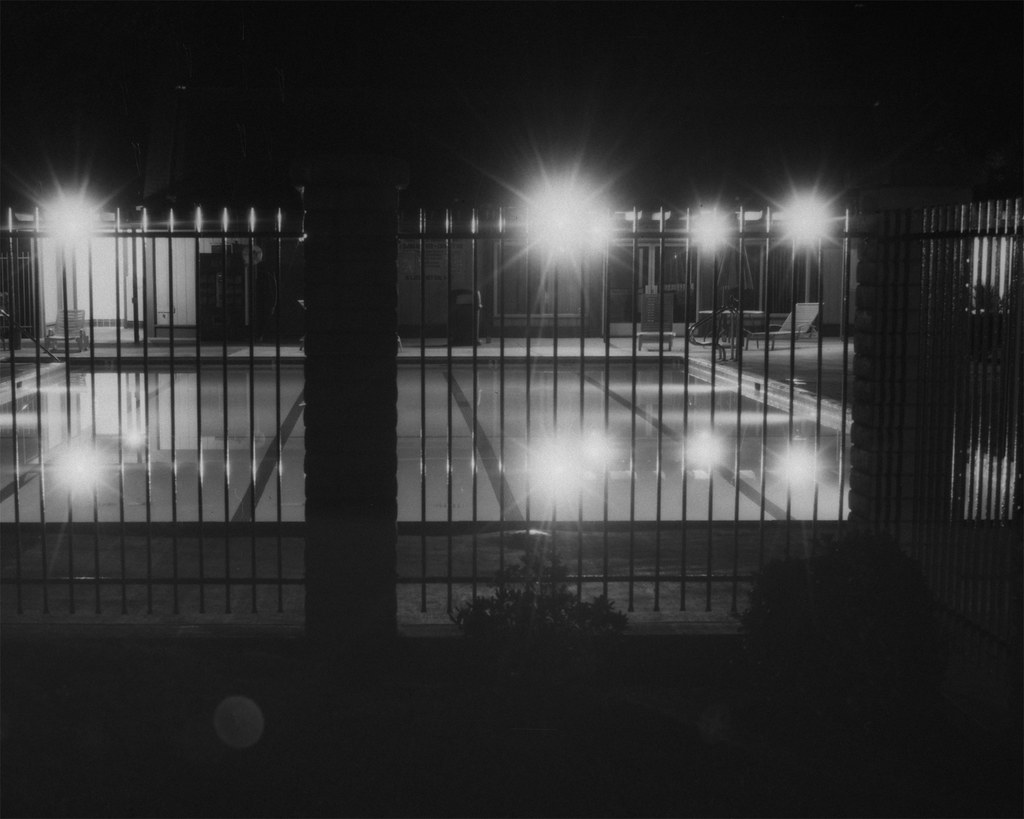
Sunday, October 20, 2013
Diffraction
I generally stay away from the higher (smaller) apertures on most of my lenses. Why? Diffraction. This happens when the light has to pass through a small opening. It tends to scatter and your photos will be less sharp. It gets noticeable above say f/11 or so. Also , those small apertures cut the amount of light hitting your film, so unless you are shooting high speed film (or pushing your film higher than its 'box speed') the shutter speeds get long-ish. So when I walked out to the pool the other night I was planning on shooting my lens wide open even though my camera was mounted on a tripod. But when I got out there and saw the light and realized I was looking at a very high contrast scene that might be a little boring, I decided to close down the lens to f/32. I spot metered the water in the pool and came up with a 2 minute exposure time. I wasn't sure if the x-ray film I had loaded in the Speed Graphic would have the latitude to compensate for any reciprocity failure, but I decided just to shoot at the metered value and see what I got. The pool isn't going anywhere and I can re-shoot this scene any night of the week. What I was hoping for with that small aperture was to see some diffraction of the bright lights to give the composition a little 'umph'. Most lenses will also make stars out of points of light at small apertures because of the imperfection of the circle made by the aperture mechanism. I like how this photo came out. It looks pretty much the way I saw it in my head. It's not deeply meaningful or poignant, but kind of a cool night shot of something I see every day.


Subscribe to:
Post Comments (Atom)
No comments:
Post a Comment